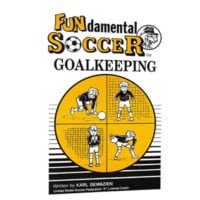Letter to Parents
Mom and Dad, you are your child’s first and most influential teacher/coach. The stimulation and support you provide can instill a desire to play soccer. If your child plays only to gain your approval, their interest in playing may decline, and playing for its own sake is sacrificed. Make this learning experience Together as much FUN as possible so that your child becomes self-motivated and improves on his/her own.
Before the first practice, you should find out if your child is interested in playing organized soccer. Make a conscientious effort to listen to your child. Talk about mutual goals in playing soccer both short and long-term. Make all conversations’two-way.’ During your talks, it is very important to find out…if your child is really interested in playing soccer!
Begin the season by building a good working relationship with your child’s coach. You must keep in mind that the coach may be a volunteer with family and other responsibilities. Find out what your child’s coach expects of your child so that you can reinforce those expectations at home. This means that you need to get to know each other on a personal basis. Freely and fully discuss your mutual needs, concerns, and expectations. Make all conversations ‘two-way’. Be sincerely interested in the coach and the assistance he/she may need.
Every child needs some assistance in developing a love/passion for soccer, and this can be developed by:
Reading about soccer Together. First, you will show your child the value of reading. Second, you will be showing your child affection and providing comfort. Third, you will show your child that you are interested in developing and sharing in his/her interest. Finally, through the reading material, you may stimulate your child’s interest and establish that soccer is serious FUN and not serious work.
Watching games Together. As you are watching games decide what you will focus on: A specific player, A specific technique, Specific running patterns… Ask your child to imagine themselves being part of the action on the field. Discuss the action on the field and find out if your child is really observing the game as a participant. But, remember the younger the child, the shorter the attention span!
Watching training DVDs’ Together. Select only ONE technique per viewing. Plan to repeat each segment several times so that the subconscious can record the action. Look for a different aspects of the movement such as head movement, body movement, foot movement as separate focal points. Have your child explain to you what each movement would be if they were performing the movement.
Practice Together. Find out what your child’s coach expects of your child so that you can reinforce those expectations at home. Or, have your child put into action what you read about or observed. When trying to show your child how the technique looks, be sure to laugh at your own mistakes. Your practice sessions should be short unless your child shows great interest in continuing. Practice Together today and every day! Since this will be your child’s only childhood, and they are available right now –Start playing right now. Delaying practice until tomorrow is always too late, so practice together today because sometimes tomorrow never comes!
Play the 1 vs. 1 game Together. Teach your child ‘how to’ set up a 1 vs. 1 field. Begin by having them hold two objects (ex: milk cartons) in each hand. With feet together move the right foot as far to the right as possible and place down the first object. Bring the feet back together and repeat the action with the left foot to the left side and again placing down the object. Taking the second set of objects walk about 10 big steps and repeat the previous sequence. There you have your 1 vs. 1 field ready to go.
Some Do’s you need to be aware of when playing 1 vs. 1 with your child:
- Do have a goal to attack and a goal to defend.
- Do offer light resistance so that your child does not become discouraged.
- Do allow your child to score.
- Do encourage them to dribble and attempt to make fakes and feints.
- Do allow them as many touches with the ball as possible.
- Do give them encouragement.
- Do have lots of FUN together!
Some Don’ts you need to be aware of when playing 1 vs. 1 with your child:
- Don’t hog the ball, your child needs to touch the ball as often as possible.
- Don’t’ make fun of your child or his/her mistakes, allow them to experiment without comments.
- Don’t make your child look foolish or silly, they need to be successful, or they may not want to play again!
Play the 1 vs. 1 game or other small-sided soccer games as often as possible. Playing the game, especially on a small-sided scale, teaches more than any drill, exercise, or practice situation we can invent. But the games must be FUN! Finally, when learning soccer together, be as helpful, understanding, and patient as you are/were when your child is/was learning other skills in life.
Up Next: Registration Considerations








